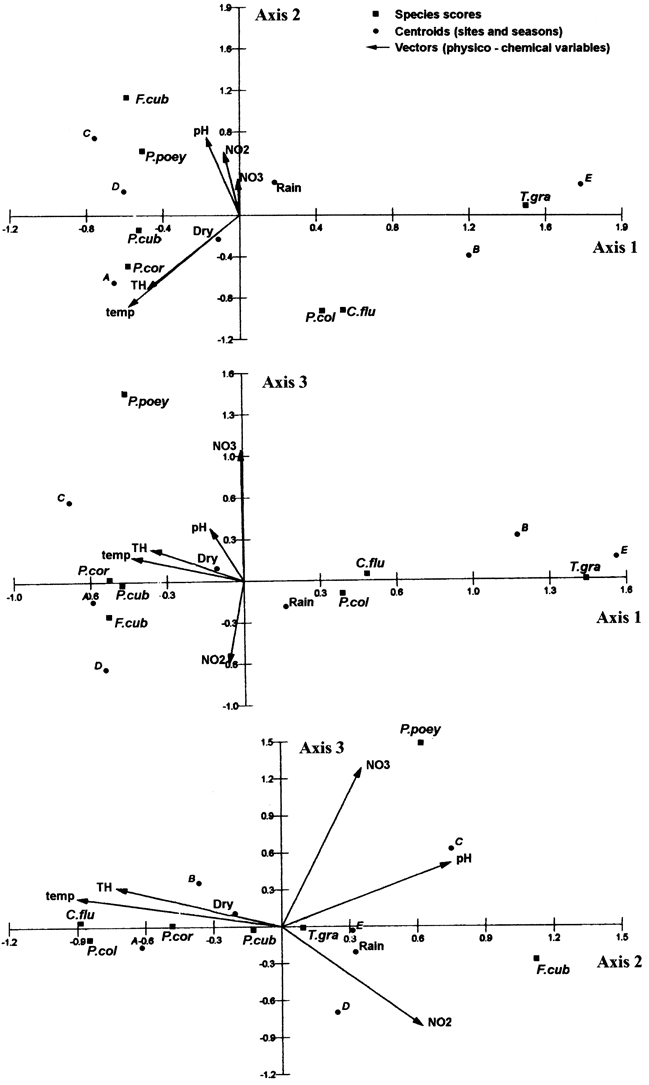The variation of abundances of intermediate snail hosts of Fasciola hepatica in Cuba (Fossaria cubensis and Pseudosuccinea columella) was studied during one year under natural conditions at five sampling sites in San Juan y Martinez municipality, Pinar del Rio province, Cuba. The effect of some environmental variables on the lymnaeid abundances was also studied. A canonical correspondence analysis showed that both species do not generally occur together in the same habitat and that most factors affect them in an opposite fashion, although both of them correlate positively through time to the diversity of the habitats. F. cubensis prefers the sites that are in or closer to the city whereas P. columella is more abundant in rural sites. Lymnaeid abundances are mainly affected by nitrite and nitrate concentrations as well as by the abundance of the thiarid Tarebia granifera. F. cubensis is more abundant in polluted habitats with low densities (or absence) of T. granifera whereas P. columella prefers cleaner habitats and can coexist with the thiarid, even at its higher densities. The implications of divergent preferences of the two lymnaeids for the control of fasciolosis are discussed.
Fasciola hepatica; Fossaria cubensis; Pseudosuccinea columella; Lymnaeidae; canonical correspondence analysis; Cuba



